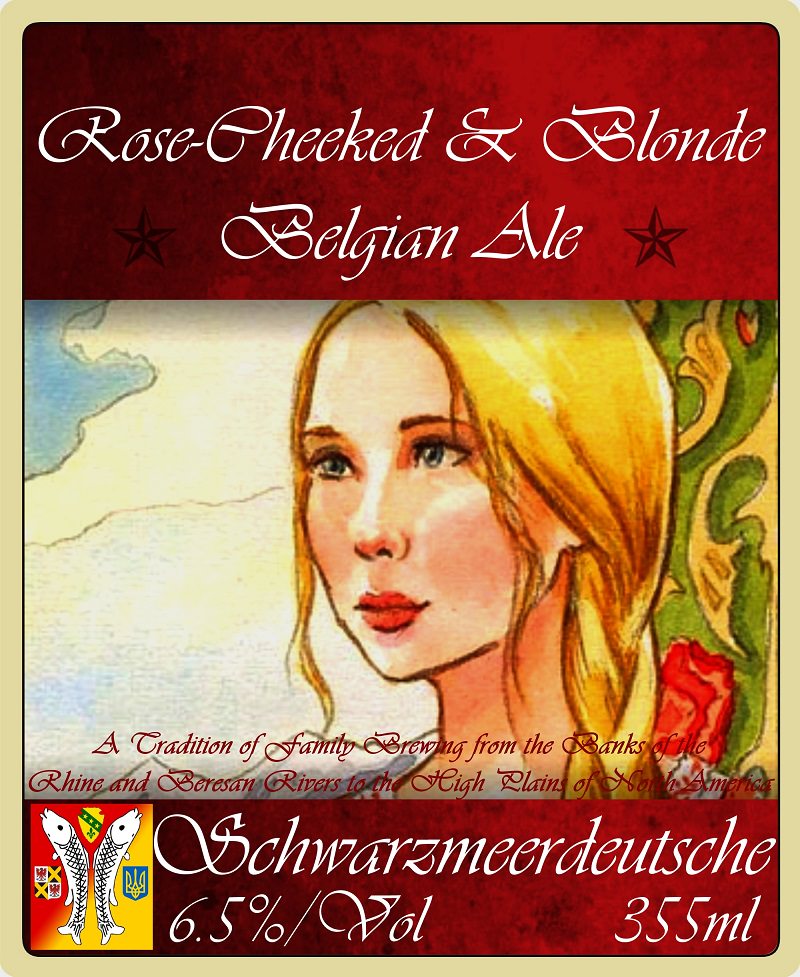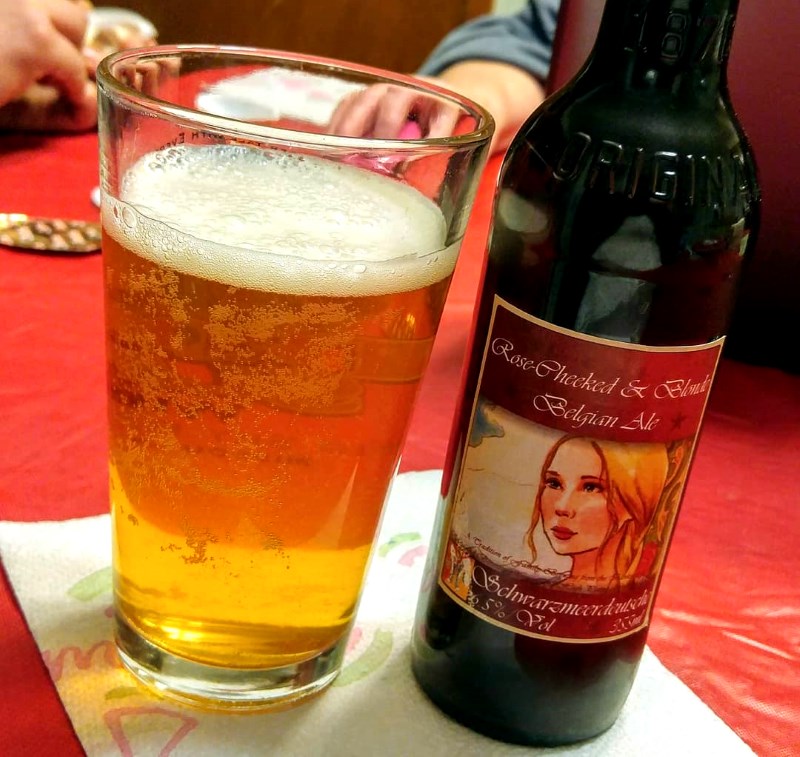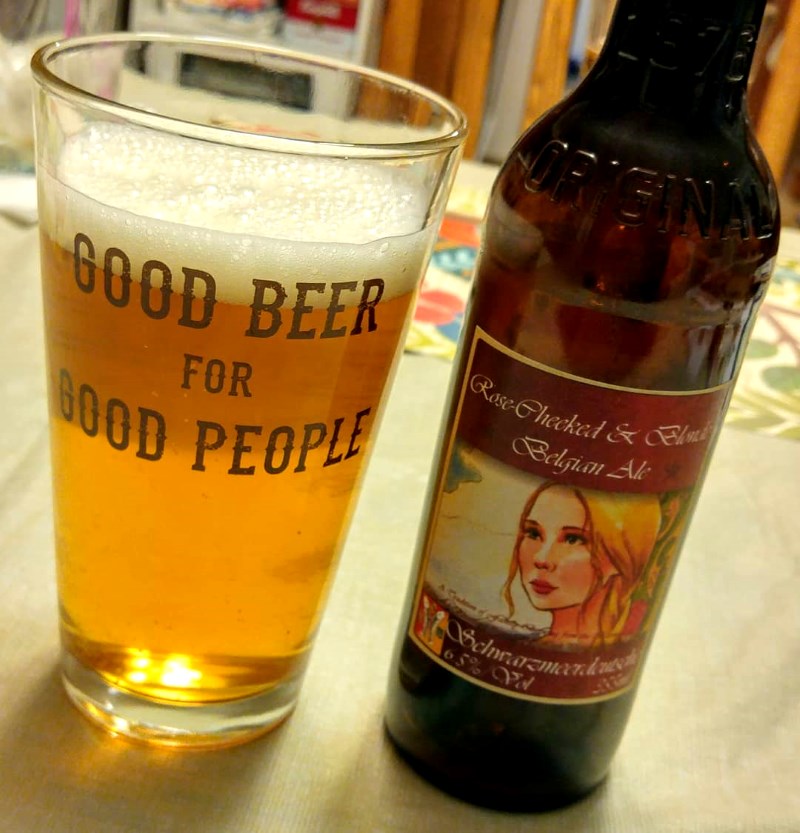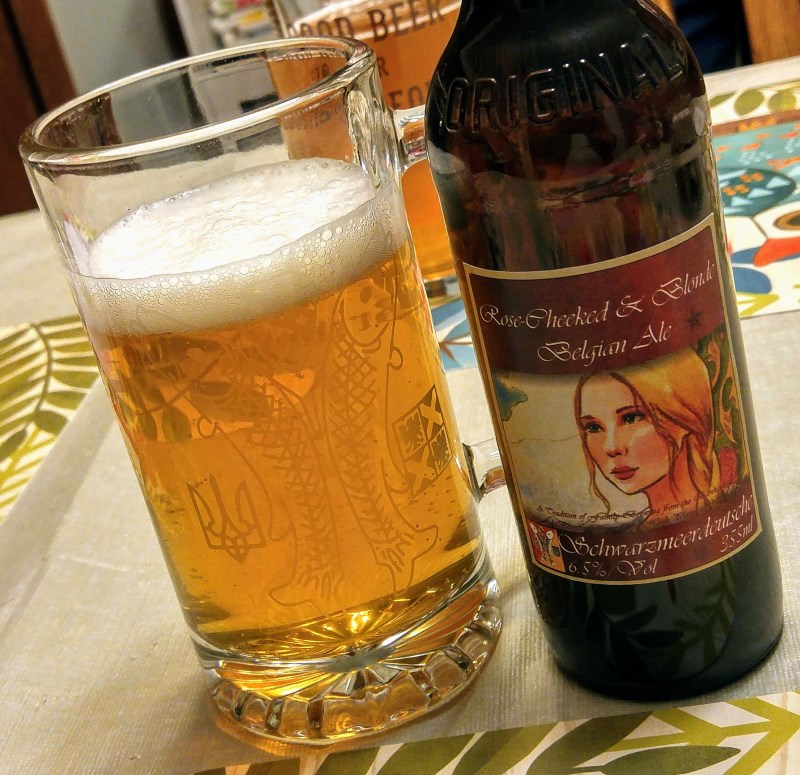TasunkaWitko
Well-Known Member
Tonight, I am brewing a rose-kissed Belgian Blonde ale from Brooklyn Brew Shop. Called "Rose-Cheeked and Blonde," this beer is a typical Belgian Blonde with the addition of rose hips and petals, which are added during the boil. Brooklyn Brew Shop describes it as "a breath of fresh air with a heady swirl of floral-toned aromatics that’ll make you blush.... Rose hips (the dried fruit of the rose plant) add just a touch of fermentable sugar and reddish colour, while the buds leave a heady, floral aroma." At 6.5% AV, I can imagine that it will pretty interesting once finished.
The recipe for this beer can be found in Brooklyn Brew Shops's BEER MAKING BOOK, and is also currently offered as a pre-packaged mix at www.brooklynbrewshop.com:
https://brooklynbrewshop.com/collec...ducts/beer-making-mix-rose-cheeked-and-blonde
From what I can see, there is a slight difference between the two versions; the pre-packaged version, which I am brewing right now, seems to employ torrified wheat, which is not in the recipe that is in the book. The written recipe, however, does call for Carapils. I have written Brooklyn Brew Shop inquiring about this, and will share their answer, assuming that I will get one. Aside from that, the beer is comprised mostly of Belgian Pilsner malt, with a little Aromatic tossed in for some great malty flavour and aroma. As for hops, this beer uses Styrian Golding hops to the tune of a little more than 21 IBUs; most of the hops are added at the beginning of the boil, with a small amount added right near the end for aroma.
As mentioned above, I am brewing this beer right now, and am about halfway through the boil. I have been basically following the instructions as outlined here:
https://brooklynbrewshop.com/pages/instructions-rose-cheeked-blonde
So far, the brew has been going very well, with mash temperatures holding right about where I wanted them to, and no sticking during the sparge.
Following the usual procedure, I'll chill down the wort once the boil is finished, then transfer to the fermenter, pitch the yeast etc. If anything worthy of note occurs, I'll post it here.
As always, I invite discussion on this beer and this brew; if anyone has any questions or comments, please feel free to post them here, and I will do my best to address them.
More as it happens, etc. & c....
Ron
The recipe for this beer can be found in Brooklyn Brew Shops's BEER MAKING BOOK, and is also currently offered as a pre-packaged mix at www.brooklynbrewshop.com:
https://brooklynbrewshop.com/collec...ducts/beer-making-mix-rose-cheeked-and-blonde
From what I can see, there is a slight difference between the two versions; the pre-packaged version, which I am brewing right now, seems to employ torrified wheat, which is not in the recipe that is in the book. The written recipe, however, does call for Carapils. I have written Brooklyn Brew Shop inquiring about this, and will share their answer, assuming that I will get one. Aside from that, the beer is comprised mostly of Belgian Pilsner malt, with a little Aromatic tossed in for some great malty flavour and aroma. As for hops, this beer uses Styrian Golding hops to the tune of a little more than 21 IBUs; most of the hops are added at the beginning of the boil, with a small amount added right near the end for aroma.
As mentioned above, I am brewing this beer right now, and am about halfway through the boil. I have been basically following the instructions as outlined here:
https://brooklynbrewshop.com/pages/instructions-rose-cheeked-blonde
So far, the brew has been going very well, with mash temperatures holding right about where I wanted them to, and no sticking during the sparge.
Following the usual procedure, I'll chill down the wort once the boil is finished, then transfer to the fermenter, pitch the yeast etc. If anything worthy of note occurs, I'll post it here.
As always, I invite discussion on this beer and this brew; if anyone has any questions or comments, please feel free to post them here, and I will do my best to address them.
More as it happens, etc. & c....
Ron







